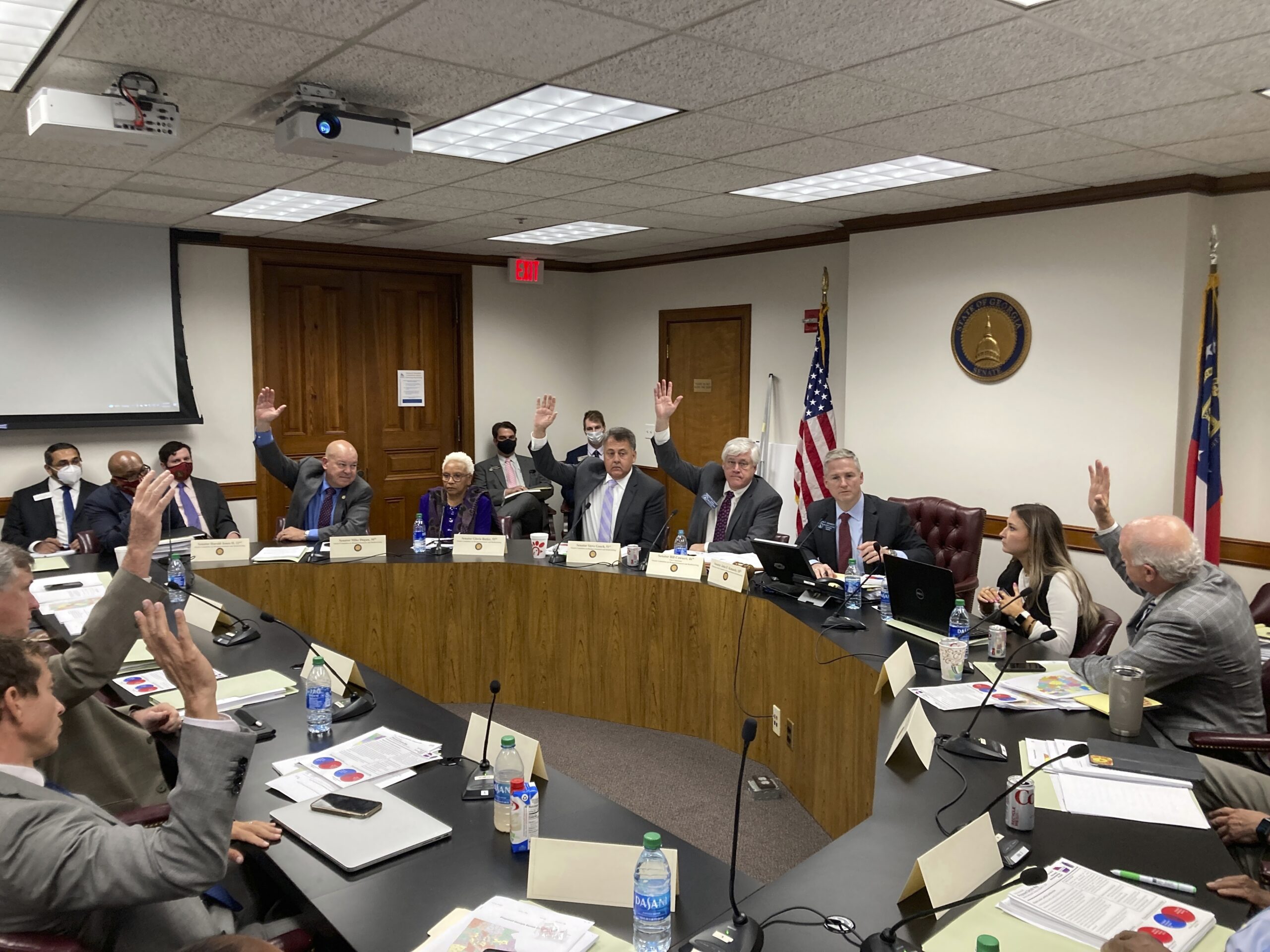Republicans on Friday advanced a plan projected to maintain a 33-23 GOP majority in the Georgia Senate, setting it up for a possible vote next week in the full Senate.
The proposal passed the Senate Reapportionment and Redistricting Committee on a 9-4 party-line vote over complaints that Republicans pushed too fast for a proposal released late Tuesday.
“This process has gone too fast,” said Sen. Harold Jones II, an Augusta Democrat. “We should really know what we’re talking about.”
As senators voted, a House committee started considering new districts for the 180-member state House.
The General Assembly must redraw electoral districts at least once every decade to equalize populations following the U.S. Census. Georgia added more than a million people from 2010 to 2020, with urban districts generally growing and rural districts usually shrinking.
This will be the first time in decades that Georgia lawmakers won’t be required to get federal approval of their maps after the U.S. Supreme Court struck down a portion of the Voting Rights Act.
Committee Chairman John Kennedy, a Macon Republican, noted that this year’s redistricting process had been compressed because of delays in releasing census results. But he said that if people wanted different alternatives considered, they should have gotten their senators to introduce them.
“No other maps have been introduced other than the minority leader’s map and it’s not in a fashion or a state that she wants to take action on,” Kennedy said. “We have one bill on which we can take action.”
Senate Minority Leader Gloria Butler, a Stone Mountain Democrat, presented a proposal Friday that was projected to trim the GOP’s majority to 31-25 from its current 34-22, but did not seek a vote on it, saying citizens deserved more time.
“The Democratic caucus wants to engage the majority, but it cannot do so if the committee effectively ends debate on Senate redistricting today,” Butler said.
Sen. Bill Cowsert, an Athens Republican, criticized Butler’s map as inferior in part because it split more counties than the 29 proposed by Kennedy.
“It’s hypocritical to attack the chairman’s plan that only splits 29 counties with one that splits significantly more for partisan advantage,” Cowsert said.
Sen Elena Parent, an Atlanta Democrat who helped draw Butler’s proposal, said it was superior because it was “better on partisan fairness” coming closer to the 50-50 partisan split seen in recent Georgia elections.
Fair Districts GA, a group that tries to prevent gerrymandering, gives the Senate proposal an F, saying it’s far too Republican to reflect the state’s overall partisan balance. The group also faults the map for having only one district where parties are expected to be competitive.
The Republican map seeks to protect all the incumbents, except for two Republicans who are running for statewide office. To offset population losses in south Georgia, the proposal removes Sen. Tyler Harper’s district and relocates it to Gwinnett County. Harper, of Ocilla, is running for agriculture commissioner. The plan also dismantles Sen. Bruce Thompson’s district and relocates it from Cherokee and Bartow counties to Roswell and Sandy Springs in north Fulton County. Thompson, from White, is running for labor commissioner.
Both those new districts might be won by Democrats, but Republicans shifted a district held by Democrat Michelle Au of Johns Creek to take in more Republican territory, possibly imperiling her.
The Republican proposal adopted Friday made some changes in suburban Cobb County, moving Dobbins Air Reserve Base from a district now represented by Democrat Jen Jordan of Sandy Springs to one represented by Michael Rhett of Marietta.
___
Follow Jeff Amy on Twitter at http://twitter.com/jeffamy.










